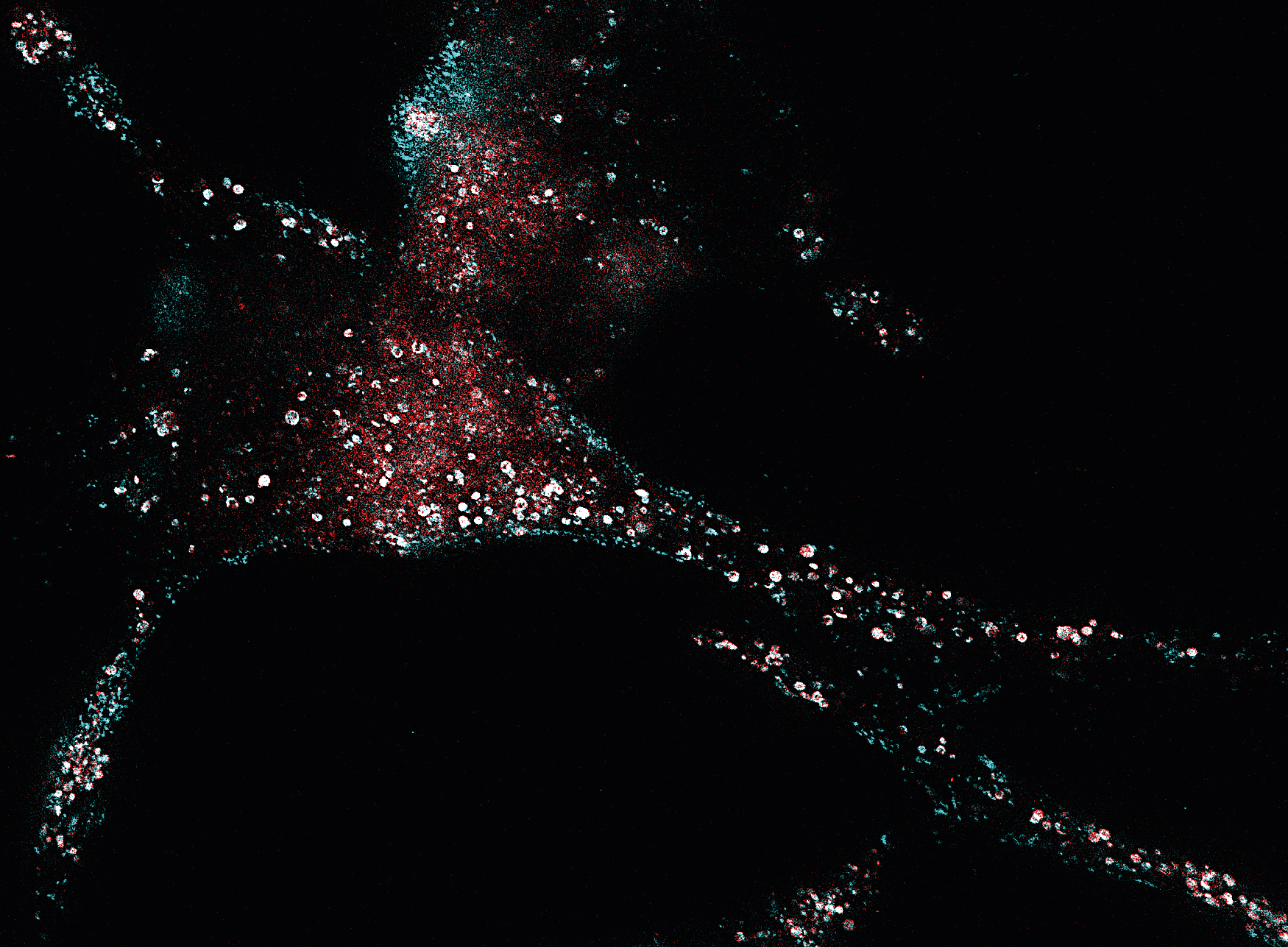23/02/2021
Print PagePSMA-Binding Agents: Versatile Against Prostate Cancer
PSMA, the prostate-specific membrane antigen, is present in small amounts on the surface of healthy prostate cells, but is much more abundant on prostate cancer cells. The protein is hardly found in the rest of the body. PSMA is therefore an ideal marker for the diagnosis of prostate cancer and at the same time a suitable target structure for specific therapies against the disease.
In recent years, substances have been developed at the German Cancer Research Center (Deutsches Krebsforschungszentrum, DKFZ) and Heidelberg University Hospital that specifically dock to PSMA and can be labeled with various radioactive substances known as radionuclides. "These radionuclide-coupled agents can be used to irradiate cancer cells from the inside," explains Ann Christin Eder, a scientist at the DKTK partner site in Freiburg at the University Medical Center Freiburg. "For this to work, the PSMA-binding agents must first be taken up into the cancer cell and remain there for as long as possible."
This process has been very little studied so far. In collaboration with Jessica Matthias and other scientists from the Max Planck Institute for Medical Research, Eder and her team have now used a method which allows precise insights into living cells in a nanometer scale to precisely analyze the distribution of the agents in the cell 1): STED microscopy STED microscopy, for which Stefan Hell, then of DKFZ and the Max Planck Society, was awarded the Nobel Prize in 2014.
For the current study, the research team led by Ann-Christin Eder at the DKFZ in Heidelberg and in their laboratory in Freiburg used so-called hybrid PSMA-binding molecules that can be coupled simultaneously with two different markers: In addition to a diagnostic radioactive label, they also bind a fluorescent dye, which also enables their use in STED microscopy.
The researchers' most important finding was that the PSMA-binding agents remained in the prostate cancer cells for a long time and accumulated there more and more over time. The molecules distributed homogeneously in the cytoplasm which may be advantageous for their therapeutic application..
The hybrid PSMA-binding agents, which consist of both radioactive and fluorescent markers, are considered promising tools to improve prostate cancer diagnosis and therapy. Through their radioactive labeling, they serve as tracers through which the tumor and its metastases can be localized using a combination of positron emission tomography (PET) and computed tomography (CT). This non-invasive imaging can be used to plan surgery and radiation therapy.
During surgery, fluorescent dye coupled to the pharmacon then helps surgeons distinguish between malignant and healthy tissue so they can precisely remove the tumor. This approach, which visualizes prostate cancer before and during surgery, was recently successfully tested for the first time with the hybrid agent PSMA-914 developed by Eder and her team in a patient with aggressive prostate cancer at the Clinics of Nuclear Medicine and Urology, University Hospital Freiburg2). PSMA-914 contains 68gallium as a diagnostic radionuclide, as well as a fluorescent dye.
"This first clinical application proves to us the potential of hybrid agents," explains Ann Christin Eder. "Future studies will now show whether PSMA-914 can also lead to improved therapeutic outcomes."
Original publications:
1)Jessica Matthias, Johann Engelhardt, Martin Schäfer, Ulrike Bauder-Wüst, Philipp T. Meyer, Uwe Haberkorn, Matthias Eder, Klaus Kopka, Stefan W. Hell, Ann-Christin Eder: Cytoplasmic localization of prostate-specific membrane antigen inhibitors may confer advantages for targeted cancer therapies Cancer Research 2021, DOI: 10.1158/0008-5472.CAN-20-1624
2)Ann-Christin Eder, Mohamed A. Omrane, Sven Stadlbauer, Mareike Roscher, Wael Y. Khoder,Christian Gratzke, Klaus Kopka, Matthias Eder & Philipp T. Meyer, Cordula A. Jilg, Juri Ruf: The PSMA-11-derived hybrid molecule PSMA-914 specifically identifies prostate cancer by preoperative PET/CT and intraoperative fluorescence imaging European Journal of Nuclear Medicine and Molecular Imaging 2021, DOI: 10.1007/s00259-020-05184-0
